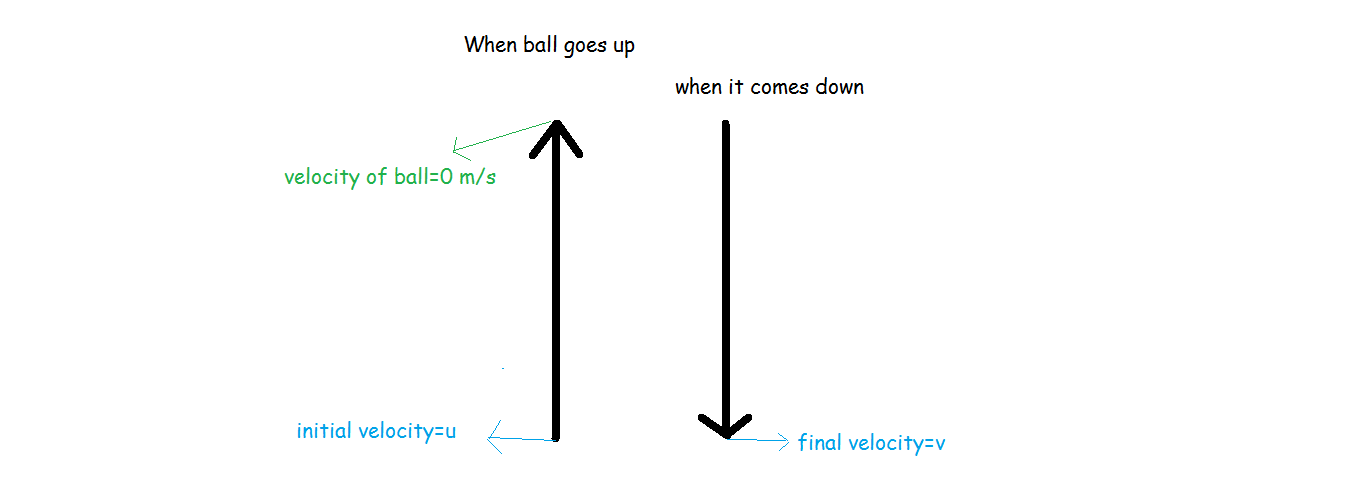Question #5a794
2 Answers
Explanation:
We're asked to find the initial and final velocities of an object, given that its maximum height is
We realize that when a particle is at its maximum height, its instantaneous
With that being said, we can use the kinematics equation
#ul((v_y)^2 = (v_(0y))^2 + 2a_y(y - y_0)#
where
-
#v_y# is the#y# -velocity -
#v_(0y)# is the initial#y# -velocity (what we're trying to find) -
#a_y# is the vertical acceleration, equal to#-g# , or#-9.8# #"m/s"^2# -
#y# is the height (maximum height, in meters) -
#y_0# is the initial height (ground level,#0# #'m"# )
We know:
-
#v_y = 0# -
#v_(0y) = ?# -
#a_y = -9.8# #"m/s"^2# -
#y = 19.6# #"m"# -
#y_0 = 0# #"m"#
Plugging in known values:
#(0)^2 = (v_(0y))^2 + 2(-9.8color(white)(l)"m/s"^2)(19.6color(white)(l)"m" - 0color(white)(l)"m")#
#0 = (v_(0y))^2 - 384.16color(white)(l)"m"^2"/s"^2#
#v_(0y) = sqrt(384.16color(white)(l)"m"^2"/s"^2) = color(red)(ulbar(|stackrel(" ")(" "19.6color(white)(l)"m/s"" ")|)#
This is the initial velocity of the ball, so now let's find the final velocity, which we can use the same equation for, only this time
#(v_y)^2 = (19.6color(white)(l)"m/s"^2) + 2(-9.81color(white)(l)"m/s"^2)(0color(white)(l)"m" - 0color(white)(l)"m")#
Which leaves us with
#(v_y)^2 = (19.6color(white)(l)"m/s")^2#
or
#v_y = sqrt((19.6color(white)(l)"m/s")^2)#
Since the object is on its way down as it touches the ground, we take the negative solution of this:
#v_y = color(blue)(ulbar(|stackrel(" ")(" "-19.6color(white)(l)"m/s"" ")|)#
Any speculations as to why the final and initial velocities have the same magnitude?
Consider the diagram

We can solve this question using one of the kinematic equation
#color(brown)(v^2=u^2+2ax#
Where
Let's consider the first case
#rArrcolor(orange)(v=0# #("as the ball comes to rest at the maximum height")#
#rArrcolor(orange)(u=?#
#rArrcolor(orange)(a=-9.8 m/s# #("acceleration due to gravity")#
#rArrcolor(orange)(x=19.6m#
Plug all the values in the equation
So, the final velocity will be the opposite of the initial velocity
Hope this helps!

